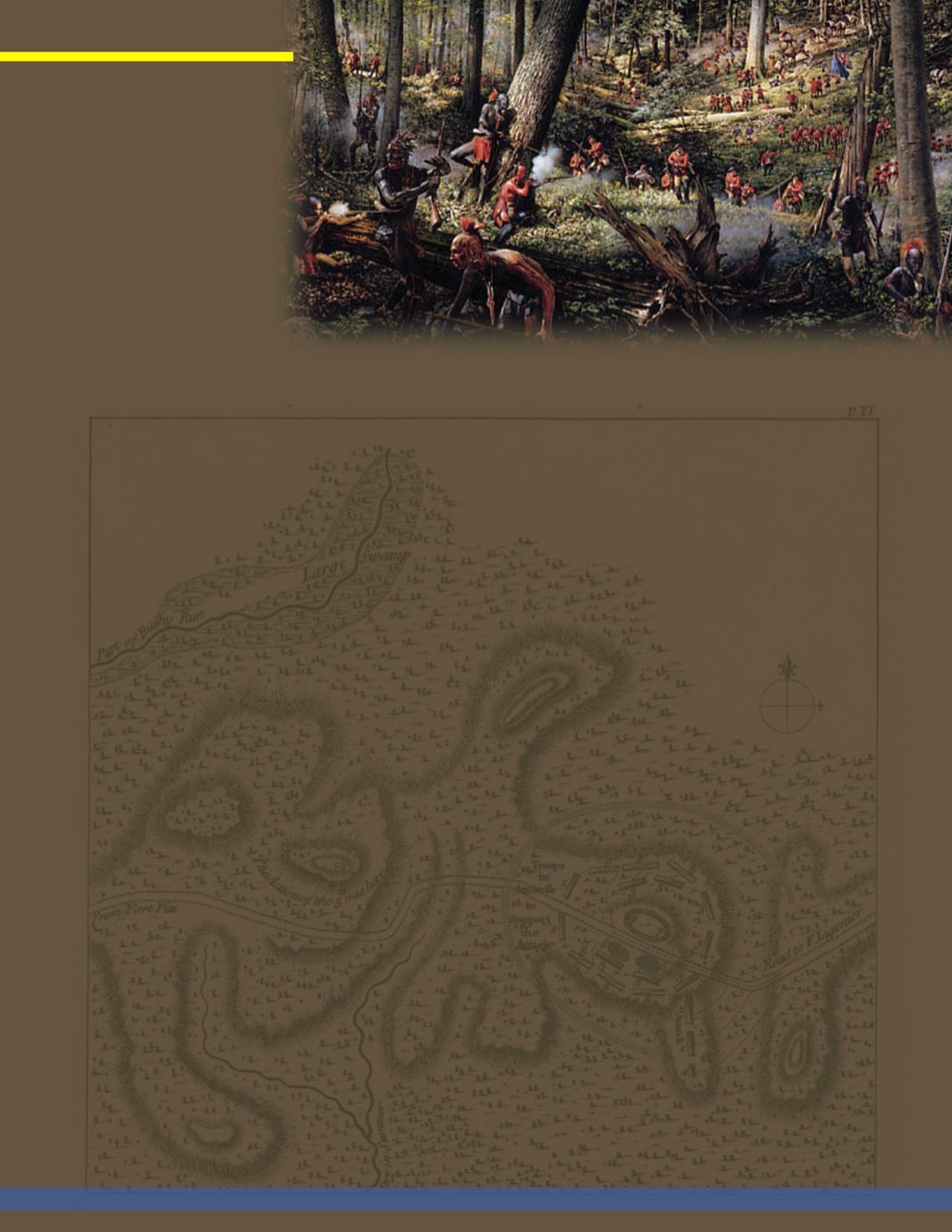
General Braddock ordered hismen to fight in the
traditional European war tactic—orderly lined ranks
of men without cover. The French and Indians hid
behind trees and shot at the English. Washington
had two horses shot fromunder him. General
Braddock was shot in the chest, and died a few days
later as his army retreated. He was buried in the
middle of the crude road that Washington’smen had
built earlier.
In 1758, British
General Forbes
was sent with a
huge army of 8,000men to capture Fort Duquesne.
When the English finally arrived, they found that the
French had set fire to their fort and fled the region.
The English built a new, stronger fort at the same
location, called
Fort Pitt
, which later became the city
of Pittsburgh.
As a result of General Forbes “victory” in
western Pennsylvania, our colony stayed under
English rule as part of the Pennsylvania colony. Two
years later, the English won the war on the North
American continent against the French. They fought
the war for threemore years in Europe. As a result,
Canada and the American colonies remained under
England’s rule and the English controlled the fur
trade on the North American continent.
The Native Americans
Continue to Fight
Although the French and IndianWar was over in
the region, many Native American tribes were
unhappy with English rule. In 1763, they attacked
trading posts and frontier forts in western
Pennsylvania. They were led in battle by
Chief
Pontiac
. Only three forts survived the attacks—
Forts Bedford, Ligonier, and Pitt. FromPhiladelphia,
the English sent
Colonel Bouquet
and an army of
450 colonials to stop the attacks. Bouquet stocked
his wagons in Carlisle with supplies and barrels of
flour for the starving pioneers.
About 20miles east of Fort Pitt, Bouquet’s army
was attacked by the Indian tribes. This fight was
known the
Battle of Bushy Run
. It was a rather
lengthy, complex battle with both sides using attack
strategies to achieve a victory. The end result was
that Colonel Bouquet’s army won this battle and
saved Fort Pitt. Hostilities with the Native Americans
lasted until the end of 1764, at which time peace
finally came to North America. This peace, however,
would last only a decade until another war, the
American Revolution, began a new episode in the
colonies’ history.
L
ET
’
S
R
EVIEW
1. What two factors contributed to Pennsylvania’s growth and prosperity?
2. Why did Philadelphia become the colonies’ largest city?
3. What was theWalking Purchase and what was themain effect the “purchase” had on Pennsylvania?
4. What was themajor economic activity that drew settlers to the Pennsylvania wilderness?
5. What two European countries fought for control of the North American continent during the 1750s and 1760s?
6. Over what region in Pennsylvania did the European countries fight?
7. Give two reasons why the French wanted to control this region?
8. Why did the Quakers of Pennsylvania ask the Virginia Governor for help in this conflict?
9. What was themain purpose of GeorgeWashington’s trip to the French Fort LeBoeuf, and what was the
main result of Washington’s trip?
10. What was the Battle of Bushy Run?
Though the French and
IndianWar had officially
ended inNorthAmerica,
Native Americans were still
unhappy with English rule.
In 1763, Chief Pontiac led
a battle against 450
colonials led by Colonel
Bouquet. This long and
complex battle took place in
western Pennsylvania near
Fort Pitt, and was known
as the Battle of Bushy Run.
A Clash of Two Empires in Pennsylvania
45


